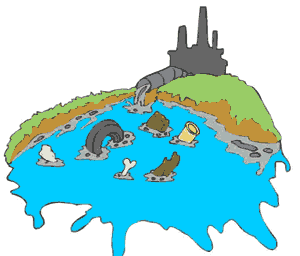|

Wastewater adds nitrogen in water |
Nitrogen is found in the cells of all living things and is a major
component of proteins. Nitrogen may exist in the free state as a gas N2,
or as nitrate (NO3-), nitrite (NO2-), or ammonia
(NH3+). Organic nitrogen is found in proteins and is
continually recycled by plants and animals. Nitrogen is important to
organisms, but too much can cause damage.
Nitrogen containing compounds act as nutrients in streams and rivers.
Nitrate reactions in fresh water can cause oxygen depletion. Organisms
depending on the supply of oxygen in the stream will die. The sources of
nitrogen into bodies of water are municipal and industrial wastewater,
septic tanks, feed lot discharges, animal wastes (including birds and
fish), and discharges from car exhausts.
Nitrites can produce a serious condition in fish called "brown
blood disease." Nitrites also react directly with hemoglobin in
human blood and other warm-blooded animals to produce methemoglobin.
Methemoglobin destroys the ability of red blood cells to transport
oxygen. This condition is especially serious in babies less than three
months of age. It causes a condition known as "blue baby"
disease.
|